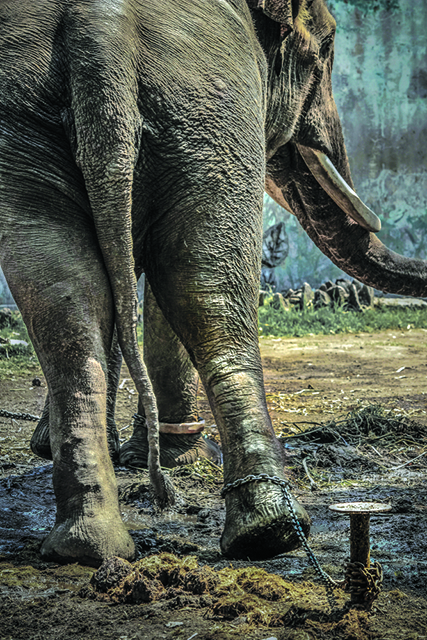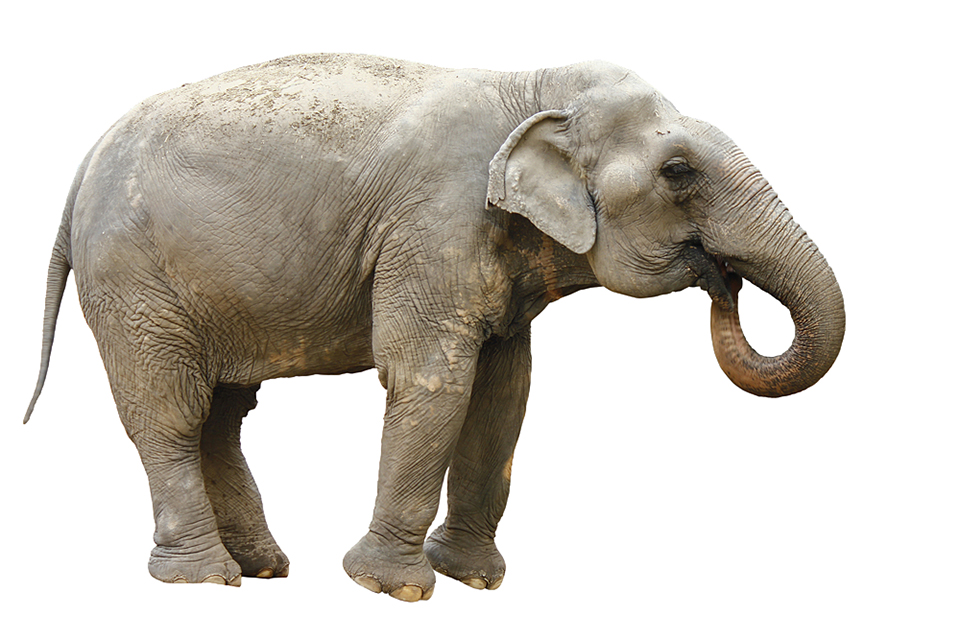THE SHOW MUST NOT GO ON
Performing elephants have always been associated with the circus, along with lion taming and other animal acts. Asian elephants have performed for the Ringling Brothers and Barnum & Bailey Circus for 146 years, in an act the American traveling circus company once billed as The Greatest Show on Earth. Elephants would balance on two legs and dance for large audiences, and featured prominently in P.T. Barnham’s famous elephant conga line.
Investigative journalists uncovered reports of mistreatment and poor care of the elephants from the beginning, as written by Oliver Whang in a 2020 article for National Geographic. One elephant died from being transported from Sri Lanka to the United States, and training with electric prods was standard practice as recently as 1967. Even well into the 21st century, many of the elephants were overworked and some died due to complications related to their health.
However, changing times and tastes sent audiences elsewhere. Bowing to pressure from animal rights activists and declining ticket sales, Ringling Bros announced that it would be closing shop for good, retiring the last of its 40 elephants, according to a 2017 piece written by Bryan Armen Graham for The Guardian.

ELEPHANT CHAIN GANG
But what happens to performing elephants after they retire? For two decades, the circus company sent its retired old performers to the Ringling Bros. Center for Elephant Conservation (CEC) in Polk County, Florida – a facility with a notorious reputation among animal activists, with elephants reportedly being chained or threatened with blows from bullhooks, as Danny Prater wrote in 2020 for PETA.org.
Organizations such as PETA criticized the conditions of the elephants’ captivity, from the size of the enclosures to the chains used to lock up the animals at night, with the CEC sometimes forcing pregnant mother elephants to give birth in these restraints.
The company running the Center for Elephant Conservation, Feld Entertainment, is the mother company of Ringling Bros., and although it defended its treatment of the animals, a number of the elephants died under its care, while others were loaned out or sold to third parties.

RAISED IN CAPTIVITY
Asian elephants are an endangered species, with the worldwide population declining by at least half in the past 75 years. Only 20,000 to 40,000 individuals still remain in the wild, mainly due to the decline of their natural habitat because of deforestation and human encroachment. Poachers also pose a threat to these gentle giants.
Because of this, about a third of all Asian elephants live in captivity, with many of them employed in agricultural, logging, and entertainment roles, mostly in India, Myanmar, and Thailand. The training process used on elephant calves is often brutal, and involves intimidating them and inflicting pain.
Like the Ringling Bros. elephants, several hundred Asian elephants live in the US, with most of them being kept in zoos, sanctuaries, or refuges. However, a handful of elephants are still owned by circuses that perform in states where performing wild animals are still legal.

SAD FATE
Asian elephants are often chosen over African elephants for performing purposes because they are smaller and considered easier to manage. P.T. Barnum favored Asian elephants over African ones in his elephant conga line in his “Greatest Show on Earth.”
A NEW BEGINNING
It seemed like the final batch of Ringling Bros. circus elephants would languish away at the CEC, forgotten. Fortunately, salvation for the 34 elephants at the CEC arrived in the form of the White Oak elephant habitat, a facility run by a conservation group partnered with the US Fish and Wildlife Service on species recovery and release efforts on several other species.
Created by philanthropists Mark and Kimbra Walter, the 135- acre White Oak Conservation Center is located in Yulee, Florida. Eventually intended to cover 2,500 acres with enough water holes, forests, grasslands, and wetlands to support the entire herd, the reserve was built with the social dynamics of the elephants in mind.
“We wanted it to be as natural as possible, and we wanted to consider the social dynamic as well,” said Nick Newby, a member of the Association of Zoos and Aquariums (AZA) Elephant Taxon Advisory Group who leads the elephant caretaker team and helped plan the habitat. “Elephants are very sociable animals, so we like to study them, see what their personalities are like, and then try to mix and match them with other elephants they might like to cohabitate with.”

A FEAT OF FREEDOM
Elephants that have spent most of their lives in captivity are challenging because they have never foraged for food themselves before and may not do well in the wild. Animals that are more comfortable with human company often seek it out to the exclusion of the herd and may not be familiar with the familial bonds that naturally form among wild Asian elephants.
No Asian elephants have ever successfully been reintroduced to the wild because of their rapidly shrinking habitat and human encroachment. However, the herd at White Oak is the largest community of Asian elephants in the Western hemisphere, with the youngest elephant being eight years old and the oldest being 75.
The elephants of the White Oak habitat often disappear for days before returning to feed on watermelon or banana buffets prepared for by the caretakers in the habitat’s barn.
NOT FOR ENTERTAINMENT
Plans to allow remote viewing of the elephants are much further down on the sanctuary’s agenda, as the priority of the White Oak habitat is first and foremost the animals’ welfare. This serves as a gentle reminder that these creatures exist for themselves, and not for the entertainment of humans. Eventually, caretakers plan to allow people to view the elephants through binoculars, as if watching them in their natural habitat.






